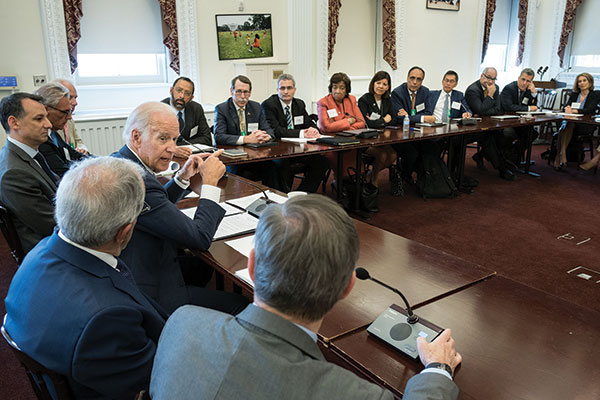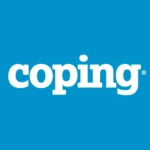Inspiration and Progress: Our National Commitment to Defeat Cancer
A National Cancer Institute Annual Report
by Douglas R. Lowy, MD, acting director of the National Cancer Institute
Every year, for the past two decades, the National Cancer Institute has had the honor of writing an article for Coping’s July/August issue. While searching for a fitting theme for this year’s contribution, I was struck by the challenge we sometimes face – both as individuals touched by cancer and as a nation – in articulating the inspiration needed to confront cancer.
As a cancer researcher, I am personally inspired by the fact that each day will bring new insights to our quest to better prevent, detect, and treat many forms of cancer in adults and children. It is a quest that has produced unmistakable progress, yet with much more still to do.
Thanks to the great strides we have made over the years, people are living longer today after a cancer diagnosis due to earlier detection and improved treatments. The number of people surviving cancer has more than doubled in the last quarter century in the United States. In 1992, there were 7 million survivors; in 2016, that number rose to 15.5 million; and by 2026, it is expected to increase to more than 20 million.
Working closely with leading cancer investigators in the U.S. and around the world is another source of inspiration for me. Years of investment in biomedical research have transformed both our understanding of and approach to researching and treating cancer. I hear unprecedented optimism that we are on the verge of pivotal advances in oncology. And just as important as what happens in research institutions like the NCI, there is also an extraordinary resurgence of commitment and determination across government, academia, industry, and the patient community.
The number of people surviving cancer has more than doubled in the last quarter century in the United States.
During the president’s final State of the Union address in January of this year, I was most gratified to hear President Barack Obama announce the launch of the Cancer Moonshot. The initiative, led by Vice President Joe Biden, aims to double the rate of progress in cancer research and bring therapies to more patients, striving to fast-track what might otherwise be achieved in ten years in just five. This opportunity to make tremendous breakthroughs in the field is enormously inspiring.

To ensure that the Cancer Moonshot Initiative’s goals and approaches are grounded in the best science, the White House established a Blue Ribbon Panel, a working group of the National Cancer Advisory Board. The Blue Ribbon Panel, whose 28 members include leading experts representing a range of scientific disciplines, government agencies, cancer centers, universities, and leaders from industry and the patient advocacy community, is responsible for recommending and guiding the scientific direction and cancer research efforts to be funded by the initiative over the coming years.
The panel created seven working groups, each comprising more than a dozen subject matter experts and patient advocates, to focus on providing the Vice President with their best thinking to guide the Cancer Moonshot. The working groups began their meetings in May, continuing weekly through mid-summer, and deliberated research opportunities in seven priority areas. The goal of each working group was to identify two to three of the most promising opportunities in cancer research that, with additional funding and focus, were poised to produce significant breakthroughs within a short period of time.
Both the White House and NCI cast the widest net possible and invited researchers and the general public to submit their best ideas for preventing and treating cancer for the Blue Ribbon Panel to consider. Approximately 850 ideas were submitted via NCI’s CancerResearchIdeas.cancer.gov website. Members of the Blue Ribbon Panel also held sessions at the annual meetings of the American Association for Cancer Research and the American Society of Clinical Oncology, as well as participated in online chats to encourage people to submit research ideas for consideration.
More and more, research and treatment approaches are informed by input from the patient community, ensuring that patients and families are treated as partners.
The effort and commitment of the members of the Blue Ribbon Panel and the working groups have been truly astounding. Leaders across the cancer community placed their already full schedules on hold to focus on this important work. The culmination of this effort will be a report to the National Cancer Advisory Board later this summer presenting five to ten actionable ideas that are recommended for funding under the initiative.
As the Blue Ribbon Panel deliberations are winding down, other efforts and activities of the initiative are being launched. On June 29, the Vice President hosted an unprecedented Cancer Moonshot Summit, a daylong conference in Washington, D.C. Attendees included scientists, oncologists, and patients who came together to help galvanize the push to double the pace of cancer research. What made it both a national and local event were the many regional summits that also took place in communities across the nation.
In addition to the priority programs being recommended by the Blue Ribbon Panel, the Cancer Moonshot is expanding or adapting several existing government initiatives to make conducting and participating in cancer research easier for both researchers and patients:
• Increased Access to and Awareness of Cancer Clinical Trials Clinical trials are a critical part of the research process for the development of new treatments for cancer. But only about five percent of adult cancer patients in the U.S. currently participate in cancer clinical trials. Under the Cancer Moonshot, NCI is working to make searching for a clinical trial on the NCI website, cancer.gov, easier for patients, physicians, and others. We are also working to encourage more patients from racially/ethnically and socioeconomically diverse populations to consider participating in a cancer clinical trial. These communities experience a disproportionate burden of cancer and historically have not been well-represented in clinical trials. Achieving health equity in cancer detection, treatment, and survivorship requires clinical trials with populations that are representative of the nation’s diversity.
• Expanded Precision Medicine Research The idea behind precision medicine is to treat patients according to their individual genes, lifestyles, and environments within which they live. By expanding the Precision Medicine Initiative announced by President Obama last year, we have the opportunity to accelerate research and provide clinicians with new tools to select targeted and tailored cancer prevention methods and therapies that will work best with the least toxicity in individual patients.
• Greater Research Access to Investigational Drugs Accessing drugs from different pharmaceutical companies to test combinations of therapies in clinical trials can be time-consuming, expensive, and difficult. But prescribing two or more drugs instead of just one can often help patients avoid developing resistance to a single drug and make therapies as effective as possible. To speed the development and delivery of effective combinations of treatments to cancer patients, NCI is developing a virtual cancer drug formulary, or library, which would give researchers access to a large number of drugs contributed by pharmaceutical companies to test in combination with others.
• Greater Access to Genomic Data Last month, NCI launched its Genomic Data Commons, a first-of-its-kind, open-access, cancer data-sharing repository that allows researchers to contribute data from decades of research studies conducted around the world into one repository to facilitate access, sharing, and reanalysis of the raw data. Among the data the GDC will store, with safeguards for patients’ privacy, are the treatments that patients received and patient response, enabling investigators to gain a deeper understanding of cancer and develop more effective treatments.
The Cancer Moonshot has asked a great deal of the cancer community in stepping forward to accomplish a monumental amount of work in such a short period of time. The community, including the survivor and advocacy communities, has generously and enthusiastically responded with the understanding that what they are contributing now will make a difference for the future. I am grateful for their service, humbled by their contributions, and confident that the results will benefit everyone who cares about cancer.
More and more, research and treatment approaches are informed by input from the patient community, ensuring that patients and families are treated as partners. They bring a vital point of view to the process, providing a better understanding of the unique physical, psychological, social, and economic needs of the growing population of cancer survivors, and enhancing our ability to address those needs.
Working in partnership with survivors and patient advocates helps to keep our healthcare system in check, ensuring none of us loses sight of the fact that healthcare is not just about medicine, treatment, and statistics. Above all, it’s about the enrichment of people’s lives by improving outcomes and providing inspiration and hope.
Since 1994, the National Cancer Institute has written an exclusive annual report for Coping’s July/August Celebration issue.
This article was published in Coping® with Cancer magazine, July/August 2016.


